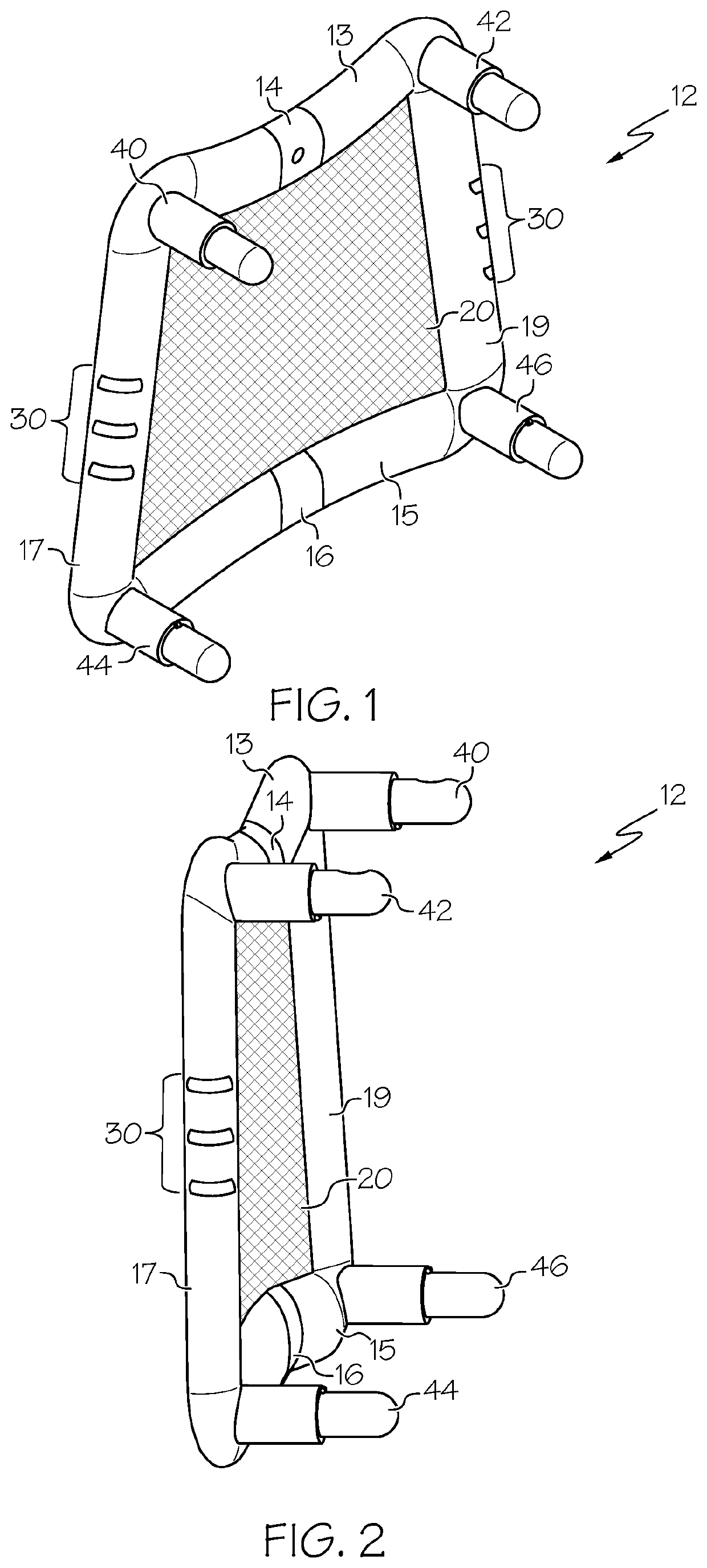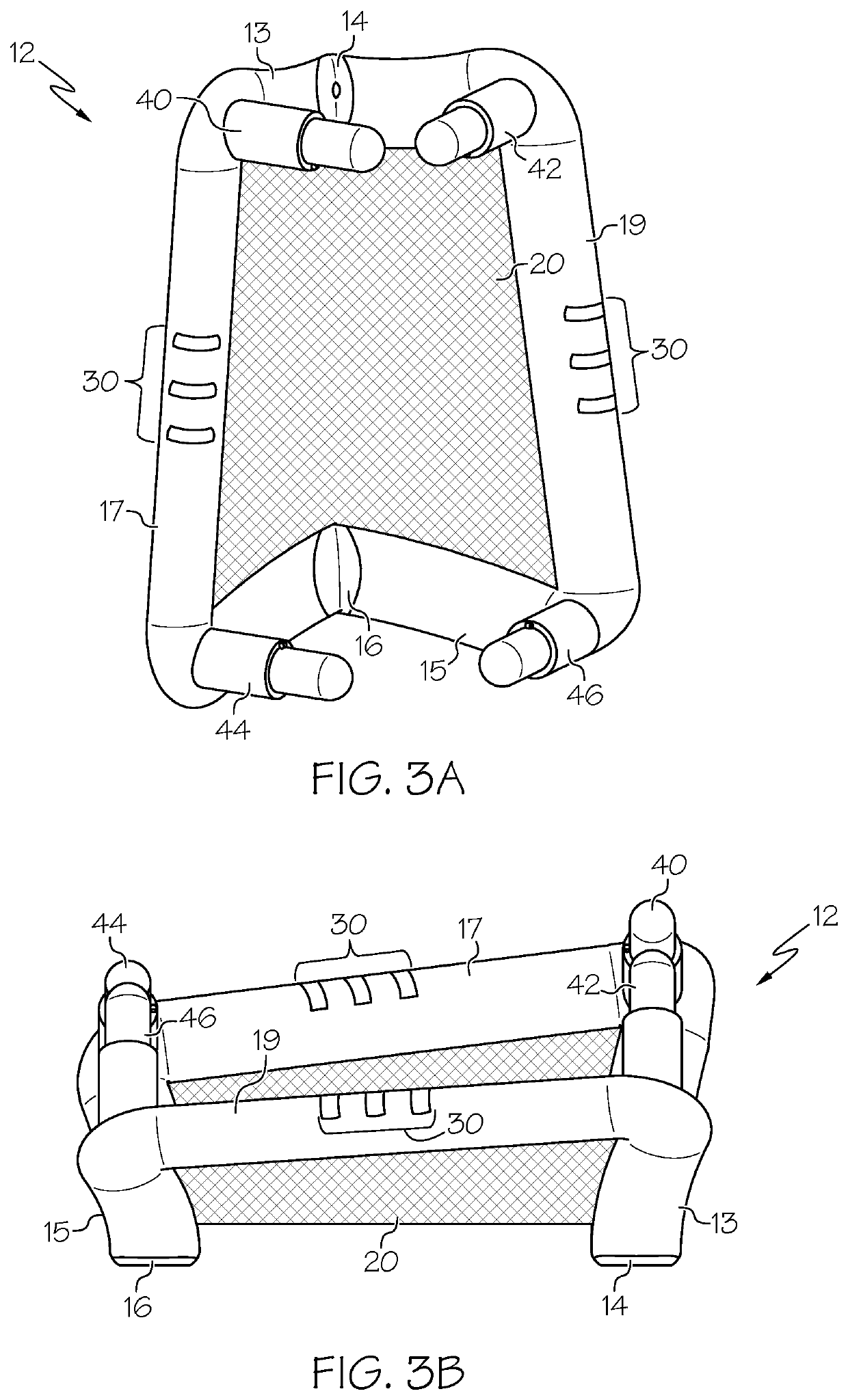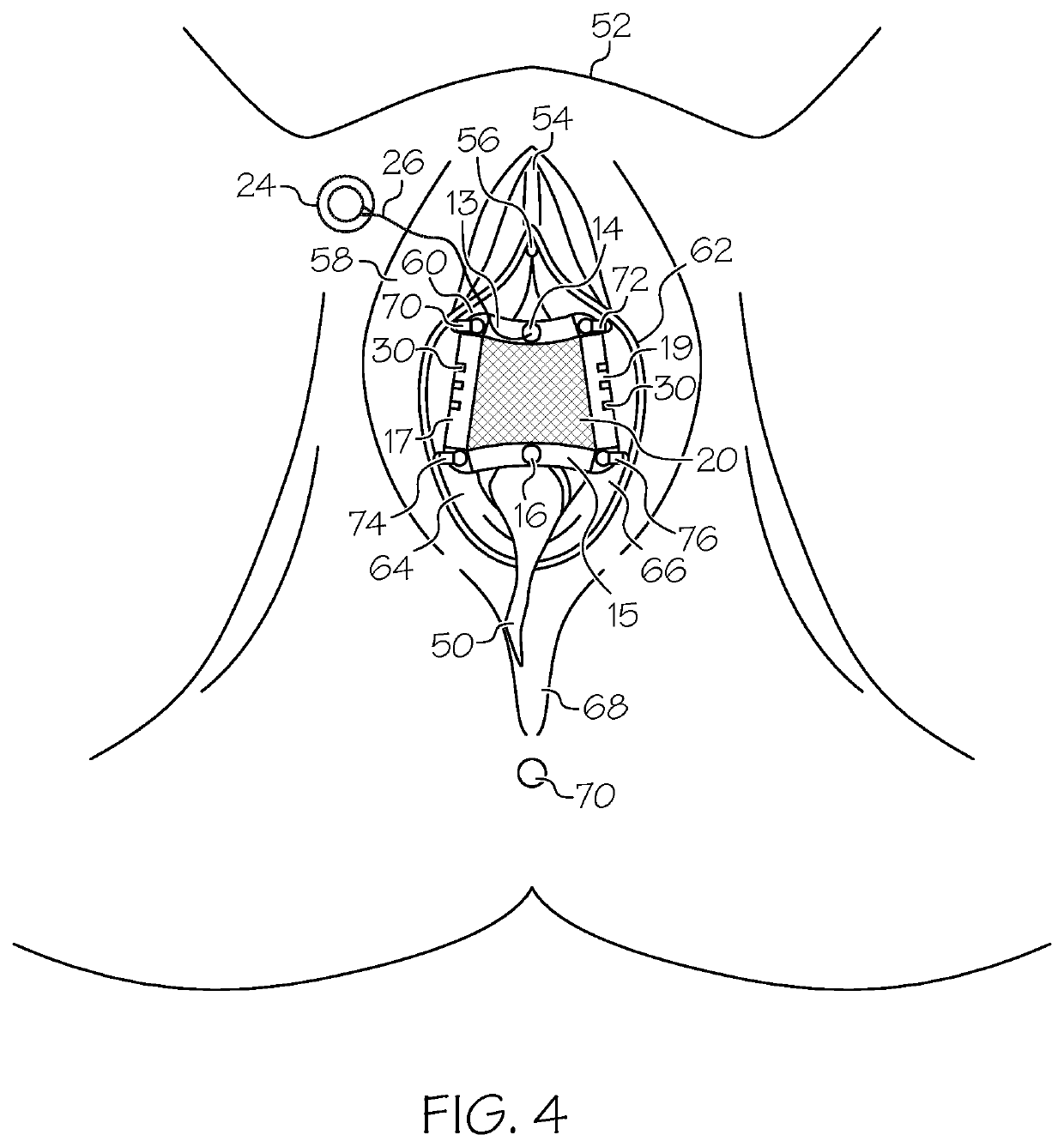Retractor for vaginal repair
a vaginal laceration and retraction technology, applied in the field of retractors, can solve the problems of retraction, laceration of stretching, tearing and laceration of the vaginal walls and perineum, prior art retractors of bladed or speculum-type have not been completely satisfactory for post-partum laceration repair
- Summary
- Abstract
- Description
- Claims
- Application Information
AI Technical Summary
Benefits of technology
Problems solved by technology
Method used
Image
Examples
Embodiment Construction
[0021]As used herein, terms such as laceration, tear, cut, incision, “lacerated tissues”, “vaginal laceration” or “episiotomy incision”, although technically different in nature and created in different ways, are understood to be interchangeable.
[0022]As used herein, terms such as fold, foldable, folded, collapse, collapsible and collapsed are understood to be interchangeable when referring to either the upper and lower supports or the frame being in, or assuming, a “closed” position.
[0023]A preferred embodiment of the inventive retractor is illustrated in FIGS. 1, 2, 3A and 3B, which show a foldable frame 12. The frame 12 is biased or predisposed to take an expanded or “open” position as shown in FIGS. 1 and 2, but can be folded or otherwise manually compressed or collapsed by a user into a “closed” position as shown in FIGS. 3A and 3B. Looking at FIGS. 1 and 2, both the upper support 13 and the lower support 15 include a bendable central crimp, 14 and 16, respectively. More specif...
PUM
 Login to View More
Login to View More Abstract
Description
Claims
Application Information
 Login to View More
Login to View More - R&D
- Intellectual Property
- Life Sciences
- Materials
- Tech Scout
- Unparalleled Data Quality
- Higher Quality Content
- 60% Fewer Hallucinations
Browse by: Latest US Patents, China's latest patents, Technical Efficacy Thesaurus, Application Domain, Technology Topic, Popular Technical Reports.
© 2025 PatSnap. All rights reserved.Legal|Privacy policy|Modern Slavery Act Transparency Statement|Sitemap|About US| Contact US: help@patsnap.com



